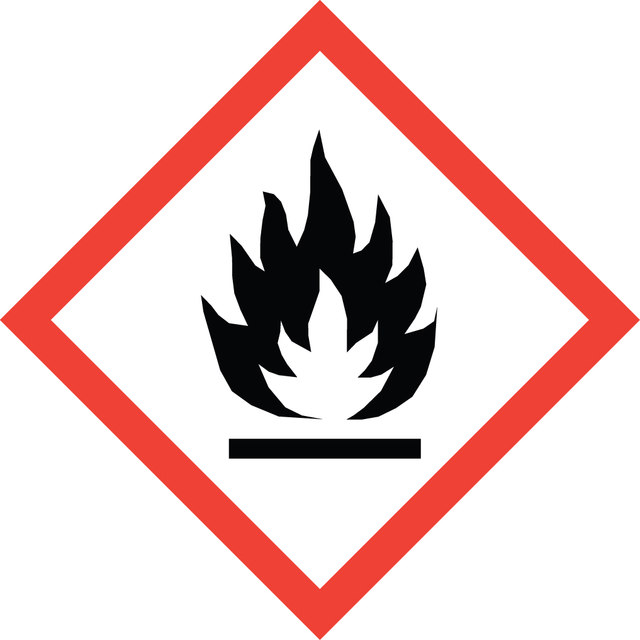439126
Acetone
suitable for HPLC, ≥99.9%
Sign Into View Organizational & Contract Pricing
About This Item
Linear Formula:
CH3COCH3
CAS Number:
Molecular Weight:
58.08
Beilstein:
635680
EC Number:
MDL number:
UNSPSC Code:
12190000
PubChem Substance ID:
NACRES:
NA.02
Grade:
HPLC grade
Assay:
≥99.9%
Technique(s):
HPLC: suitable
Bp:
56 °C/760 mmHg (lit.)
Vapor pressure:
184 mmHg ( 20 °C)
grade
HPLC grade
Quality Level
vapor density
2 (vs air)
vapor pressure
184 mmHg ( 20 °C)
Assay
≥99.9%
form
liquid
expl. lim.
13.2 %
technique(s)
HPLC: suitable
impurities
≤0.5% (water)
evapn. residue
<0.0002%
color
clear colorless
refractive index
n20/D 1.359 (lit.)
bp
56 °C/760 mmHg (lit.)
mp
−94 °C (lit.)
solubility
water: miscible
density
0.791 g/mL at 25 °C (lit.)
λ
H2O reference
UV absorption
λ: 330 nm Amax: 1.00
λ: 340 nm Amax: 0.10
λ: 350 nm Amax: 0.02
λ: 400 nm Amax: 0.01
suitability
suitable (pesticide analysis)
format
neat
SMILES string
CC(C)=O
InChI
1S/C3H6O/c1-3(2)4/h1-2H3
InChI key
CSCPPACGZOOCGX-UHFFFAOYSA-N
General description
Acetone is a ketone. Mixtures of TiO2 (P25) with rare earth oxides (La2O3 or Y2O3) calcined at 700°C or 650°C has been reported to efficiently photocatalyze the oxidation of acetone. Its aldol condensation in vapor-phase has been investigated over MgO promoted with alkali (Li, Na, K and Cs) or alkaline earth (Ca, Sr and Ba) metal ions. It undergoes Aldol condensation in the presence of Mg-Al layered double hydroxides (LDH) as catalysts and Cl- and/or CO32- as compensating anions to afford diacetone alcohol and mesityl oxide. Enantioselective Aldol condensation of acetone with various isatins in the presence of dipeptides (catalyst) has been described.
Application
Acetone was used in the affinity purification of modified proteins using streptavidin beads for the mass spectrometric (MS) identification of poly(ADP-ribose) polymerases (PARP) substrate proteins.
It may be used in the following studies:
It may be used in the following studies:
- NMR spectroscopic evaluation of glucose metabolism in biological samples (blood).
- Preparation of 13wt% amorphous poly (lactic acid) (PLA) solution, which was required for the preparation of electrospun PLA membranes.
- As a precursor for the synthesis of methyl isobutyl ketone (MIBK) in the presence of sulfonated graphene oxide-Pd/cordierite catalyst.
- Synthesis of (4-hydroxymethyl-2,2-dimethyl-1,3-dioxolane), a solketal from glycerol using supercritical fluids (SCF) technology.
- 1-isopropylidene-2-methylhydrazine
- 1-isopropylidene-2-hydroxyethylhydrazine
- 1-isopropylidene-2-formylhydrazine
Acetone′s luminesence intensity is dependent upon the solution components . The absorption of UV light by acetone, results in its photolysis and the production of radials .
Packaging
M-Bottle for Solvents
As a global leader in lab reagents, we are constantly looking for new ways to optimize the safety of our products. The newly developed 4L solvent bottle design features advanced sealing technology that eliminates leaks to make the handling of solvents safer and more convenient than ever before.
See all the new features here!
As a global leader in lab reagents, we are constantly looking for new ways to optimize the safety of our products. The newly developed 4L solvent bottle design features advanced sealing technology that eliminates leaks to make the handling of solvents safer and more convenient than ever before.
See all the new features here!
Still not finding the right product?
Explore all of our products under Acetone
Signal Word
Danger
Hazard Statements
Precautionary Statements
Hazard Classifications
Eye Irrit. 2 - Flam. Liq. 2 - STOT SE 3
Target Organs
Central nervous system
Supplementary Hazards
Storage Class Code
3 - Flammable liquids
WGK
WGK 1
Flash Point(F)
1.4 °F - closed cup
Flash Point(C)
-17.0 °C - closed cup
Personal Protective Equipment
dust mask type N95 (US), Eyeshields, Gloves
Choose from one of the most recent versions:
Already Own This Product?
Find documentation for the products that you have recently purchased in the Document Library.

